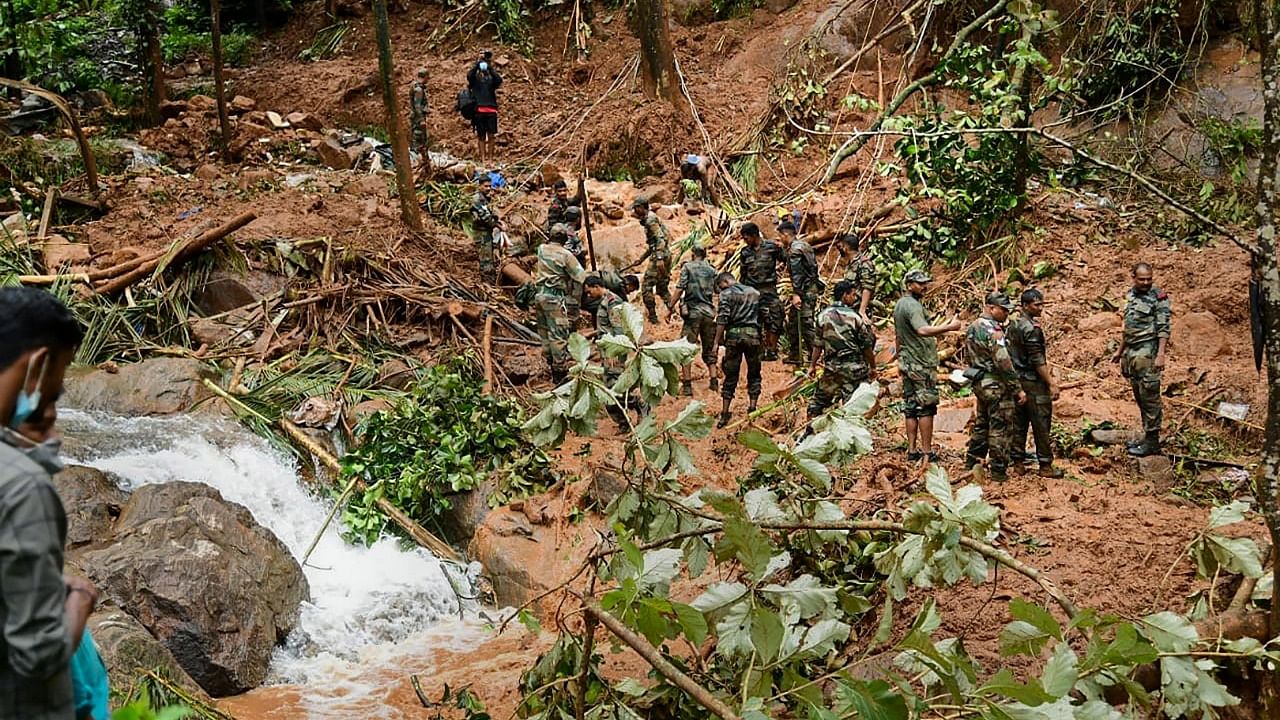
A tango by two low-pressure weather systems over peninsular India brought copious amounts of rain to Kerala, leaving parts of the coastal state submerged.
The interaction between the two weather systems which originated over the Bay of Bengal and the Arabian Sea strengthened the south-west monsoon westerly winds resulting in downpour over Idukki, Kollam and Ernakulam.
India Meteorological Department Director General Mrutyunjay Mohapatra dismissed suggestions of a cloudburst as a possible cause for heavy rains that triggered landslides in parts of the state leaving at least 21 persons dead.
“This interaction of low pressure systems led to strengthening of southwest monsoon westerly winds near Kerala coast. The strong south-westerly winds interacted with the ghat areas resulting in heavy to very heavy rainfall over different parts of Kerala, especially over Idukki, Kollam and Ernakulam districts,” Mohapatra said.
Also Read | Heart-wrenching sight as bodies of mother, child hugging recovered beneath landslide debris in Kerala
The heavy rains left several rivers in spate with many west-flowing rivers in Kerala still flowing above the danger mark.
According to the Central Water Commission (CWC), river Achankovil in Pathanamthita district was flowing above the danger mark with waters still rising at 7:00 p.m. on Sunday.
Rivers Manimala in Pathanamthitta district, Kallada (Kollam), Karamana and Neyyar in Thiruvananthapuram district were in severe situation.
Mohapatra said that there were two low-pressure systems, one over the Bay of Bengal and another over the Arabian Sea, and there was some kind of interaction between these two.
“While the Bay of Bengal low-pressure system moved west-north-westwards across north coastal Andhra Pradesh and adjoining south Odisha coast, the Arabian Sea system moved east-south-eastwards. And finally, the Bay of Bengal's low-pressure system moved towards Telangana and the Arabian Sea system reached Kerala coast on Saturday. As a result, there was maximum rainfall activity over Kerala under the influence of this low-pressure system,” he said.
Check out latest DH videos here
